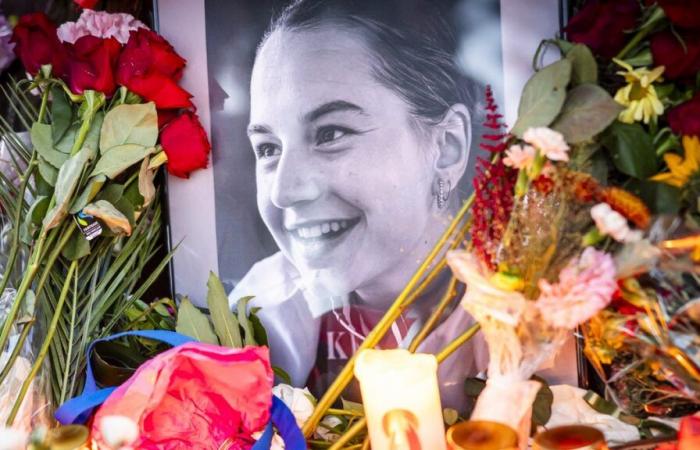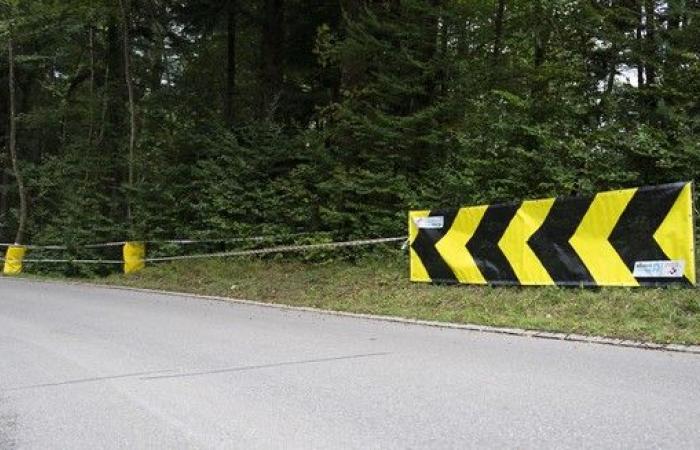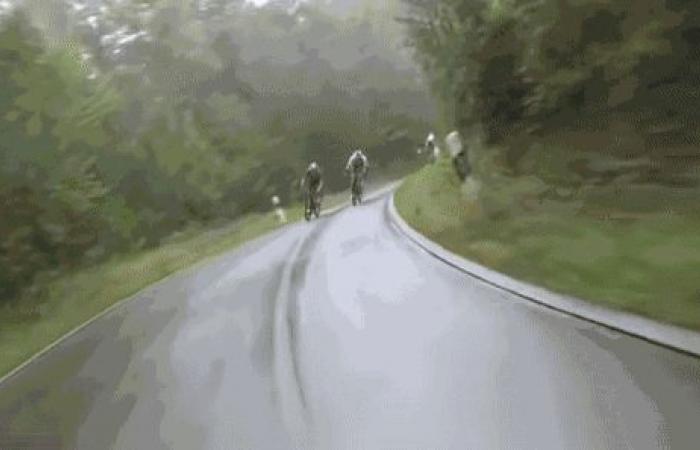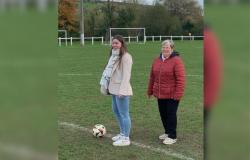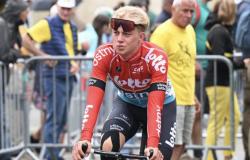Muriel Furrer died fatally at the World Cycling Championships. Bild: keystone
The 18-year-old cyclist fell on a descent during the World Cup and then lay unnoticed in the forest for an hour and a half. An earth bank that was supposed to make the curve safer couldn’t help because it ends just before the point.
08.11.2024, 12:0108.11.2024, 12:02
Pascal Ritter / ch media
Today, cemetery candles light up the place at night. The curve in the forest between Schmalzgrueb and Küsnacht, where cyclist Muriel Furrer fell during the junior women’s race on September 26th, has become a memorial site.
Funeral service at 2 p.m
This afternoon at 2 p.m., six weeks after her death, the farewell service for Muriel Furrer will take place in Uster. In addition to families and friends, numerous people from cycling are also expected to attend the funeral service.
During the day, cyclists and drivers stop and talk. How could this happen? Why here? Memories come back to Gino Mäder’s fall during the Tour de Suisse 2023. It later turned out that the curve had been criminally underestimated. From the organizers and from the drivers. An almost identical accident had occurred during an amateur race two years earlier. What about Furrer’s accident curve? What does their history tell us?
The presumably fatal curve for Muriel Furrer.Bild: keystone
Two car accidents since 2016
In the slope behind the entrance to the curve, a black and white street post testifies to an accident in the past. The map from the Federal Roads Office (Astra), which has been showing accidents with injuries since 2011, shows a serious accident at exactly the point where Furrer fell. On a summer night in 2016, a car skidded between 2 and 3 a.m. At least one person was seriously injured.
A driver who drove off the road near Furrer’s accident scene in November 2017 was lucky in misfortune. Although the accident vehicle fell 80 meters towards the Küsnachter Tobel, the driver escaped without serious injuries, as the “Zürichsee-Zeitung” reported at the time.
At this time, additional traffic was traveling on Schmalzgruebstrasse because the more frequently used and better developed Limbergstrasse was closed. A resident complained to the “Zürichsee-Zeitung” about this measure after the accident. It is too dangerous to redirect people unfamiliar with the area along the narrow and winding road in winter. When it snows, cars can easily leave the road.
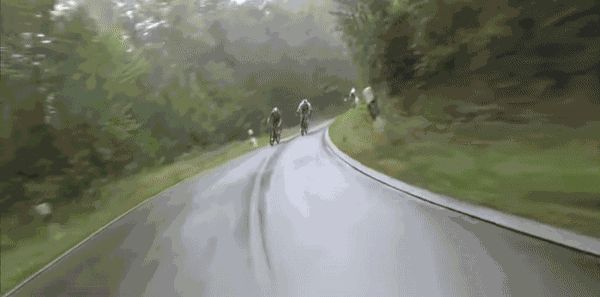

Muriel Furrer probably fell in this corner.Image: YouTube
There was no snow when Furrer fell, but it had been raining all day. If you compare the curve with older photos, for example from Google Street View, you will notice that an earth wall has since been built up on the right side of the road. No car can slide down the slope at this point as easily as it did in 2016.
Furrer most likely fell at the exit of the curve, exactly at the point where the earth wall ends.
The passage is very delicate
Former Swiss Triathlon President Werner Bhend has passed the section of the route where the accident occurred several times as an athlete. “There I reached a top speed of around 80 km/h, of course the professionals even more – and on a route that wasn’t completely closed off,” he remembers in an interview with the NZZ.
“As organizers, we had this passage in mind early on, recognized it as sensitive and looked at it accordingly with the police.” A few years ago, not far from the spot in question, a triathlete had a serious fall, but luckily he survived.
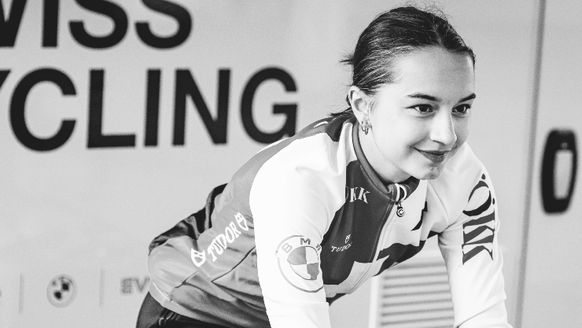
Muriel Furrer died at the age of 18. Bild: imago-images.de/watson
At the request of this newspaper, Bhend specified the scene of the accident. It is said to be in the right-hand bend at the entrance to Küsnacht, well away from Furrer’s accident site, which is in the forest.
If you compare the accident curve with other places, it is noticeable that relatively little has happened there in recent years. Nevertheless, the passage is tricky because it is narrow and confusing. This is also evident from an on-site inspection. Delicate situations arise again and again. For example, when two cars cross each other, or because there are people on the curve who light a candle for Muriel Furrer. (aargauerzeitung.ch)
The Swiss national team starts the new season today at the Karjala Cup in Helsinki. Before leaving on Monday, head coach Patrick Fischer took time for an interview with the Keystone-SDA news agency in which he looked back on the World Cup, talked about developments in Swiss ice hockey and the current squad.
Patrick Fischer, a year ago you had to explain another disappointment. Then you showed it to the critics with the World Cup silver medal. How great is the satisfaction?
I’m just really happy that it came out this way. We’ve recently struggled to deliver our performance when it counts. We addressed this problem. That’s why we brought in performance coach Stefan Schwitter, who helped us always stay in the moment. This topic was on our minds the entire season. We put pressure on the players, which then increased further due to the series of defeats. I am all the more grateful that we proved in the quarter-final against Germany that we can do it. We also demonstrated our potential in the semi-finals and finals. That felt good.

